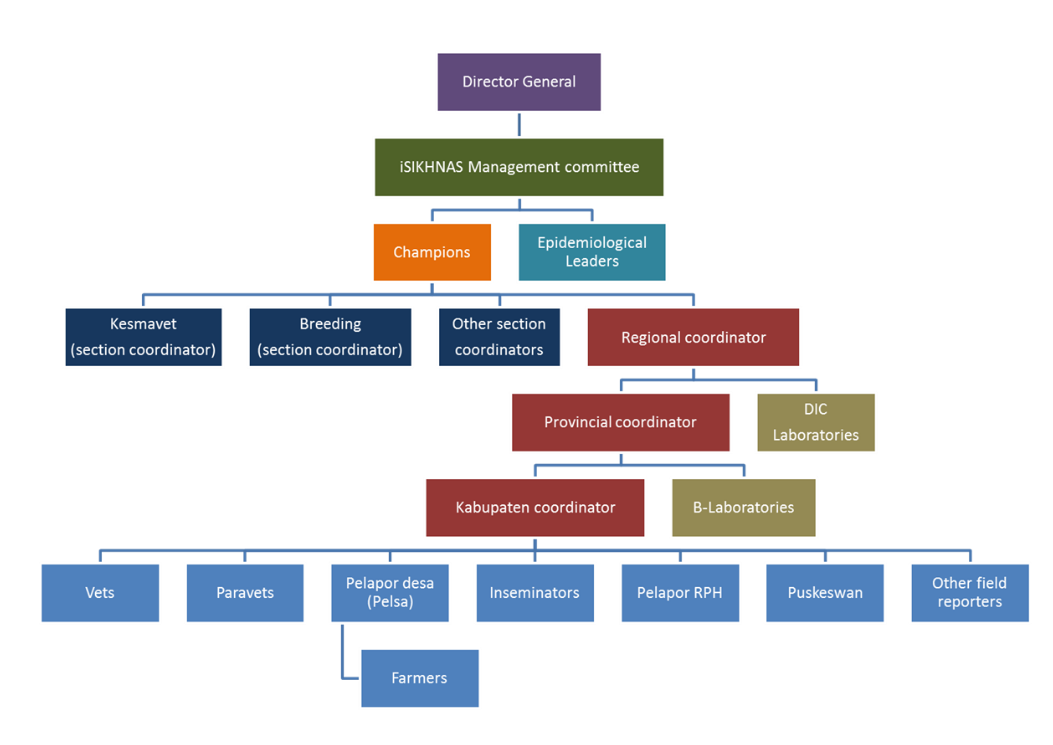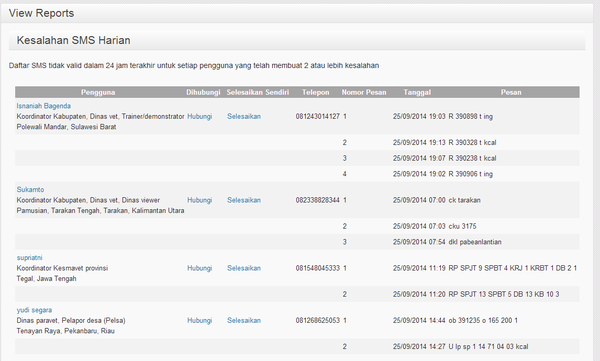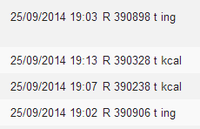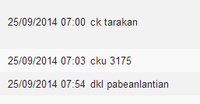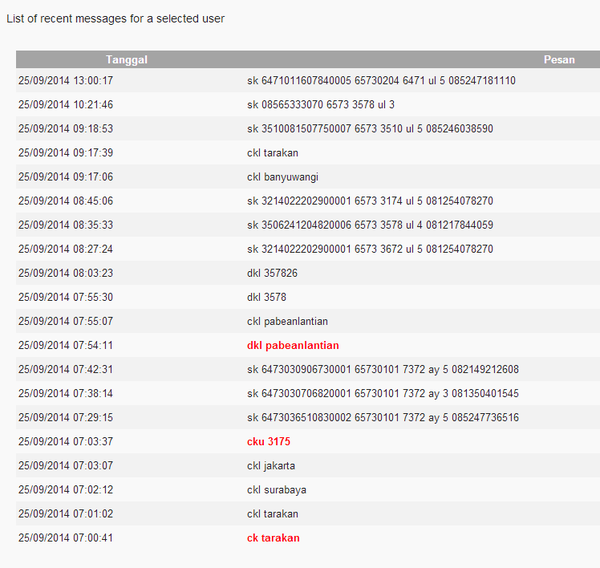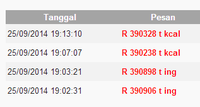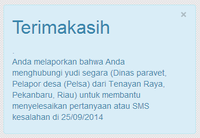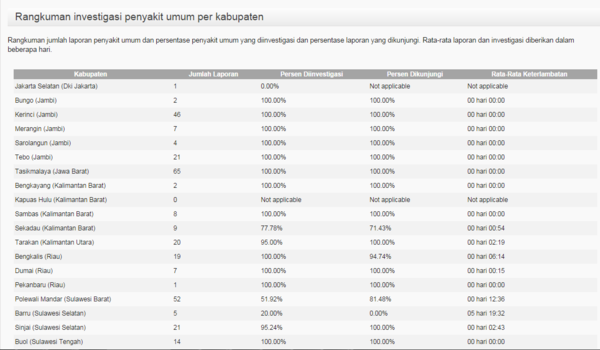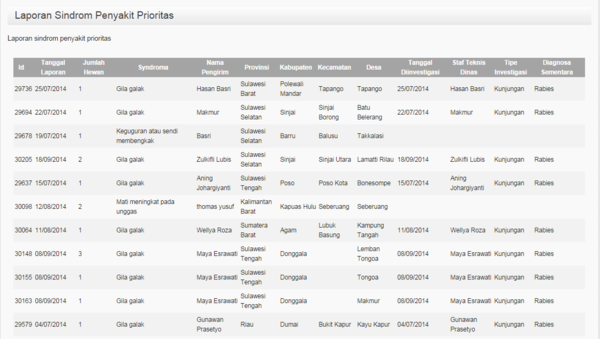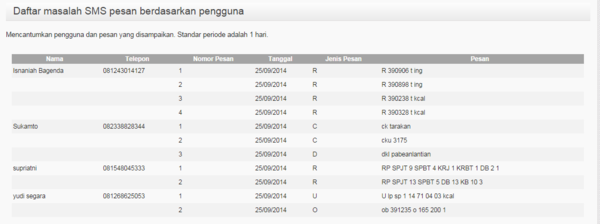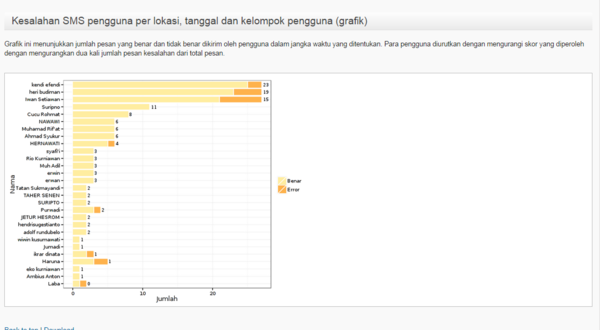Manual for Coordinators: Perbedaan revisi
(→Location Management) |
|||
| Baris 154: | Baris 154: | ||
[[Registering_Participants|Registering participants at a training course]] | [[Registering_Participants|Registering participants at a training course]] | ||
| − | |||
{{fpblock|Manage|ISIKHNAS logo big.png|The '''Manage''' menu allows coordinators to create, update and manage users and special programs such as for vaccination and surveillance, as well as managing infrastructure and location data.}} | {{fpblock|Manage|ISIKHNAS logo big.png|The '''Manage''' menu allows coordinators to create, update and manage users and special programs such as for vaccination and surveillance, as well as managing infrastructure and location data.}} | ||
| Baris 163: | Baris 162: | ||
===User registration=== | ===User registration=== | ||
| − | Coordinators have the responsibility for overseeing the registration of new users. | + | {{fpblock|User registration|ISIKHNAS logo big.png|Coordinators have the responsibility for overseeing the registration of new users. This can be done in several ways.}} |
| + | |||
| − | |||
| − | |||
| − | |||
===Standard operating procedures === <!--T:45--> | ===Standard operating procedures === <!--T:45--> | ||
Revisi per 18 Februari 2015 14.37
Daftar isi
- 1 Menu Cepat: Koordinator iSIKHNAS
- 2 iSIKHNAS Co-ordinator Manual
- 2.1 Introduction
- 2.2 iSIKHNAS coordination and management model
- 2.3 Roles and responsibilities:Regional and Provincial coordinators
- 2.4 Roles and responsibilities:District coordinators
- 2.5 District coordinators - in more detail
- 2.6 Administration and Management
- 2.7 Tools for Coordinators
- 2.8 Manage
- 2.9 Reports
- 2.10 Monitoring your District
- 2.11 User registration
- 2.11.1 Standard operating procedures
- 2.11.2 Use of the data
- 2.11.3 Monitoring the system
- 2.11.4 News stories
- 2.11.5 Reference codes
- 2.11.6 Message formats and SOPs
Menu Cepat: Koordinator iSIKHNAS
Klik link ini
| Roles and Responsibilities | Daerah dan Provinci Koordinator | Kabupaten Koordinator | Lebih lanjut tentang koordinator kabupaten |
| Komunikasi | Lihat video | Pertanyaan umum | |
| Panduan | Reports | Manage | Monitor |
| Lookup Cepat | Kode | Format Pesan | Kueri |
| Pelatihan | iSIKHNAS | Kusus lain | Meningkatkan pelatihan |
iSIKHNAS Co-ordinator Manual
Introduction
Basic founding principles of iSIKHNAS
As any system matures, it is valuable to keep in mind of the founding principles upon which it was designed and built. iSIKHNAS will become the backbone of all Indonesia's efforts to improve animal health, secure the livelihoods of livestock owners and ensure good management of production and food supply in the country. It was designed and built in careful collaboration with a wide range of dedicated staff working for improved animal health in many different regions.
iSIKHNAS was designed so that it should;
- be flexible, user-friendly, sustainable and bring benefit to all of its users.
- meet the needs of users from as many sectors of the livestock industry as possible.
- use appropriate technology and not require great change to existing systems.
- integrate existing systems to facilitate the collaborative use of data.
- simplify and ease the data entry burden and ensure the rapid availability of data from the field.
- recognise the vital contribution each user plays in the transfer of information.
- provide benefit and good service to all its users.
- make all data widely and freely available for decision making at all levels and for a multitude of purposes.
Key coordinator functions and challenges
As a system coordinator, your leadership and guidance will help to ensure these principles remain fundamental to the system and its users. iSIKHNAS is not a data collection tool but an integrated system which will empower its users with access to relevant, up to date information rapidly and cheaply so that they can concentrate on core activities. As a coordinator, you are part of the new animal health service which is built on good relationships, clear and timely communication, leadership and support.
- Using the data to support your monitoring role
- Helping others to use the data more effectively for better animal health outcomes
- Understanding and respecting the iSIKHNAS philosophy, management and support structures, and using the help and tools available
- Understanding the roles and responsibilities of everyone involved and helping them to achieve their potential
- Providing recommendations for policy changes, technical improvements and assistance with analysis
- Motivating and reassuring staff
- Developing a culture of ongoing training
- Keeping the data up to date and ensuring that reporters are helped to submit the best quality data possible
Adapting to future change
Whilst much effort has been gone into minimising change, the new iSIKHNAS will inevitably bring about some change for all staff. Every coordinator will have to be equipped to chaperone newcomers to the system, assist in training and system operations, offer support by telephone and email, monitor reporting, errors and address weaknesses. Staff should be congratulated and thanked, given positive reinforcement for their successful engagement with the system and assisted wherever there are difficulties. Collaboration with livestock owners and their communities should give benefit or have positive outcomes at every interaction. At every step, we should remember that this is a system for providing a service to all its users equally. If everyone contributes with this in mind we will all benefit.
Changes you can expect over the coming months include;
- Increased data as roll out takes effect
- New functions and improvements on the Website
- Increase in the number of reports, charts and other analyses available
- New mapping capabilities
- Additional material on the iSIKHNAS wiki to assist you with your training responsibilities.
iSIKHNAS coordination and management model
The management of the iSIKHNAS animal health information system will be overseen by a committee appointed by the Director General of Animal Health and Livestock Services. This committee will comprise senior representation from key stakeholder groups including Production, Veterinary Public Health, Drugs Administration and Quarantine, for example.
The management committee will be supported by the technical expertise provided by the System Administrators (Champions) and the Epidemiology Advisory Panel (Epi Leaders).
Key subsectors involved in certain specialist areas such as Production and Public Health will appoint coordinators to lead the oversight and training of officers involved in these activities.
Each administrative level will appoint a coordinator appointed and that person will be given detailed training in the use and oversight of the system. This will mean that every region, province and kabupaten will have a designated iSIKHNAS coordinator. Some areas may choose to share the coordination between two or three staff members to ensure that the system is monitored and users are supported at all times.
Roles and responsibilities:Regional and Provincial coordinators
Regional and provincial coordinators play an important leadership, support and system oversight role.
Roles and responsibilities:District coordinators
District coordinators play a vital leadership, support and system oversight role at the district level. They train, motivate and support their dinas staff and all other users enabling everyone to work efficiently and effectively.
District coordinators - in more detail
District coordinators have many responsibilities but iSIKHNAS provides tools to support this key role.
Administration and Management
The iSIKHNAS website is the main tool for all administration tasks. Go to iSIKHNAS at www.isikhnas.com
A few important things to remember about the website.
Security
- Every user must be registered and trained before they can be given access (a password) to the iSIKHNAS website. The data on the website should never be shared with anyone without authorisation. Some of the data on the website may be highly sensitive.
- The password ensures the website remains as secure as possible. Read more about passwords - they are the real 'gate keepers' which keep our system secure. Don't share your password with anyone.
- The website automatically logs a user out after a certain time of inactivity. So if you leave your desk for a while and return, you will probably find that you will have to log back in to the website. This is done for security reasons.
View
- Every user will have a different view of the website and different access rights to parts of the website according to their assigned User Type and Location.
- This acts to simplify the site for users and adapt it to suit each user's core interests and responsibilities.
- The site will change over time. Features will be improved, new features added and new reports created - users should be prepared to adapt to the changing face of the system.
User Management
User registration
- Registering new users using a mobile phone or website
- Registering many new users using a spreadsheet upload to iSIKHNAS
User administration
Infrastructure Management
Location Management
- Create new sub-locations such as dusun, or farms using the LOK tool.
- Soon, coordinators will be able to manage all the location changes in their area themselves.
Click here to see a powerpoint presentation about this technique.
- Create new locations such as new villages or kabupaten - please contact the Champions at champions@isikhnas.com
Program Management
- Vaccination programs
- Active Surveillance programs
- Other programs - culling, extension activities
- Training programs - in development
Tools for Coordinators
Training resources
Coordinators have the responsibility for planning and conducting the ongoing training of staff in how the system operates and all of its relevant functions.
Visit the iSIKHNAS Training Centre for Coordinators and Trainers
How to facilitate courses. Good training and communication techniques for presenters
Registering participants at a training course
Manage
The Manage menu allows coordinators to create, update and manage users and special programs such as for vaccination and surveillance, as well as managing infrastructure and location data.
Reports
The Reports menu provides access to the database for animal health and staff monitoring purposes. It allows coordinators to view reports and analyses in various formats, as well as download raw data.
Monitoring your District
The Monitoring sub-menu in Reports provides access to the database for system and staff monitoring purposes. It allows coordinators to view reports and analyses in various formats, as well as download raw data.
User registration
User registration
Coordinators have the responsibility for overseeing the registration of new users. This can be done in several ways.
Standard operating procedures
Coordinators will need to be fully aware of the system's data codes, SMS formats, data standards and standard operating procedures for SMS-based reports.
Use of the data
Coordinators need to be competent users of the iSIKHNAS website and in particular of how to access data from the site. Coordinators should use the Reports section of the iSIKHNAS website heavily for a variety of different purposes, but also, very importantly, help and encourage others to explore, become familiar with and use this data.
Remember: The reports menu on the iSIKHNAS website is growing all the time. There are now over 200 reports which can be customised to your area. These reports display YOUR data in useful ways to help you to interpret and analyse the data. These reports come in the form of tables, charts and maps.
Reports to monitor and support staff
Click here to find out more about how to use the system to monitor, evaluate and support your staff
The key problems to look out for are:
- staff who are making a lot of errors and who are not succeeding to solve their own problems and reduce their error rate over time
- slow response rates to priority syndrome reports - every P alert should be responded to quickly
- poor rate of reporting amongst registered users, indicating low motivation, poor compliance, poor training, confusion, lack of confidence
- inaccurate or illogical reports, indicating they need more training
- poor treatments unsuitable for the problem, indicating that staff need more training in this area
- low follow up rates or outcome reports may indicate poor practice and low engagement by staff
- dropping rates of reporting from Pelsa may indicate a dissatisfaction in the service they receive by dinas, a low or inconsistent response rate by dinas or the perceived low value of their role.
How to support staff to encourage improved work and service?
- Errors
- make sure staff are actually reading the reply messages they receive from iSIKHNAS. The system identifies the general problem whenever a user makes a mistake and sends users the correct format or code type to make it easier to avoid a second error.
- Get your staff into the habit of using the iSIKHNAS query messages which give all the correct codes and message formats.
- Reward or congratulate staff who show persistence or who are improving. This will really show them that you are monitoring and care about their progress, and that you appreciate that we all learn at a different pace.
Daily error and question log
This report is sent automatically to Coordinators every day, and lists all users in their area of responsibility that have made two or more errors, or asked questions (with a Q message during the last 24 hours.
This is a key report to help coordinators identify when field users are having trouble and to help them quickly. Coordinators should check this report every day and follow-up users with problems immediately.
The report is delivered by email every day, but it can also be accessed at any time on the web site at: http://www.isikhnas.com/id/rout?id=12
This is a special report that contains active links to:
- help you understand the problems that the user is having, and
- let the Champions and system administrators know what action you have taken
Here's how to use the report: 1. Check the report every day 2. For each user listed, look at the errors that they have made
Here is an example of the errors from one user.
In this example, the user has tried to submit R reports for 3 different cases in the space of about 10 minutes. They are clearly having trouble
Look at another user:
Here they have made several different errors with different messages. Just looking at the errors, it is hard to tell if they were able to get the message right, or if they need help
3. To find out if they were able to resolve the problem on their own, click on the user's name. This will take you to the iSIKHNAS web site and show you a list of all the messages sent by the user on that day.
Note: you will have to be online and log in to the web site to be able to see this detailed report
Looking at all the messages from this user, it is much easier to see what they have been doing. They made several mistakes but then they were able to work out the correct message and continue to submit more data.
In contrast, look at the full listing from our fist user above:
This user has made nothing but mistakes, and hasn't been able to submit any of their reports. They need to be helped to understand the reason for the mistakes
4. If the user needs help, the coordinator should contact them to explain why the messages were wrong, and give them some help to avoid similar problems in the future. This is very important - if a user fails repeatedly to send messages, they will start to hate the system, and not want to use it. If they understand the problem, they will be able to use it easily, and see how it can save them time, so they will love it.
5. Let the system administrators know what you have done. Just as the coordinator's job is to monitor and support the field users, the administrators' job is to monitor and support the coordinators. They need to know if the coordinators are doing their job properly, or if they need more support and training. 5.1 To record what they have done, for each user listed in the SMS error listing report, the coordinator should click on the link indicating the outcome.
5.2 There are two links:
5.2.1 Contacted / Hubungi - this means that you have contacted the user, either in person or by phone, to help them with their problem
5.2.2 User resolved / Selesai sendiri - this means that, by examining the reports on the iSIKHNAS web site, you were able to see that the user was able to resolve the problem on their own and didn't need any assistance.
5.3 Click the correct link. This will take you to the iSIKHNAS web site, save your response and display the following page:
5.4 If you haven't had a chance to do either, don't click either of the links.
5.5 Then go back to the email or original report, check the next user and repeat.
The step of reporting your actions is very important. If you don't, the iSIKHNAS administrators will think that you are not supporting the users in your area, and may recommend changing the coordinator.
Reports on response rate to field alerts
These reports examine response rates to field reports, general and priority.
- Rangkuman investigasi penyakit umum per kabupaten
- Rangkuman investigasi penyakit prioritas per kabupaten
- Laporan Sindrom Penyakit Prioritas
Example: User error reports
- Daftar masalah SMS pesan berdasarkan pengguna
- Kesalahan SMS pengguna per lokasi, tanggal dan kelompok pengguna (grafik)
Reports to use in animal health
- The list of available reports to analyse data relating to animal health is growing all the time. Some reports relate to disease, others to surveillance and vaccination.
- Think about doing the Excel course or the Epidemiological Data Analysis course to further develop your skills in this area.
Other reports
Budget advocacy=
- There are many existing reports which will help with keeping track of the use of resources including staff time.
- Have a look at a course specialising in Using iSIKHNAS data for Budget Advocacy and learn more about how you can use evidence-based arguments when seeking more funds for activities.
Breeding management
- These reports are still undergoing development. Please contact your local coordinator to work with the Champions to create new reports suitable to your needs.
Abattoir activity
- Specificbattoir reports.
How to ask for a new report to be made
- Define your question and what data you will need to answer it. Make the question as clear and reasonable as possible. Contact your Coordinator or the Champions via email to ask for this new report.
Monitoring the system
News stories
- Contributing stories to the iSIKHNAS website
The Champions will welcome any iSIKHNAS related news stories which can be added to the iSIKHNAS website. Perhaps you are going to run some training, or you have a campaign to recruit new Pelsa or socialise the system with farmers. Tell us about your activities. Please send your news to them with as many relevant details as possible. A photo would be good too. Soon you will be able to add them yourselves.
Reference codes
Kode-kode sistem : iSIKHNAS Code lists

